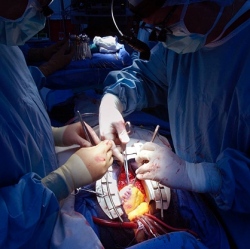
Twice now, surgeons in Australia have revived a dead heart, that had stopped beating, and brought it back to life before transplanting it into a new person. It’s a huge breakthrough that could potentially save 30 percent more lives compared to ordinary heart transplants, according to the surgeons who performed this feat.
At St. Vincent’s Hospital in Sydney, surgeons reactivated a heart that hadn’t been beating for almost half an hour. They put it in a new machine they called a "heart in a box," which warmed the heart and poured fluids through it that gave the muscle nutrients to reduce tissue damage (it’s called perfusion). The box connected to a circuit that helped the heart to beat again. The patients who received revived hearts are doing well, doctors said.
A heart transplant typically takes place right on the line between life and death. After a patient is declared brain dead, the donor’s still-beating heart is removed and stored on ice, where it essentially hibernates. The cold hearts can be kept chilled for four hours before being transplanted. In this case, though, the hearts were donated after the donor’s circulatory death. That means they had stopped beating entirely.
Other organs have often been donated after circulatory death. Livers, kidneys, and lungs can be preserved and warmed in a similar fashion as the heart-in-a-box. But this is the first time anyone has saved a heart in this way. Scientists at St. Vincent’s and the Victor Chang Cardiac Research Institute developed a new heart preservative to make it possible.
